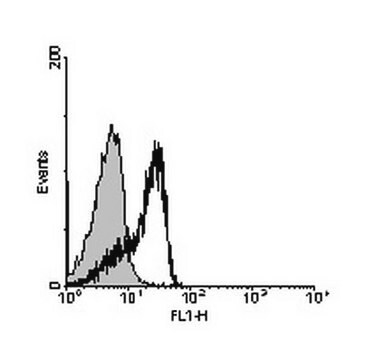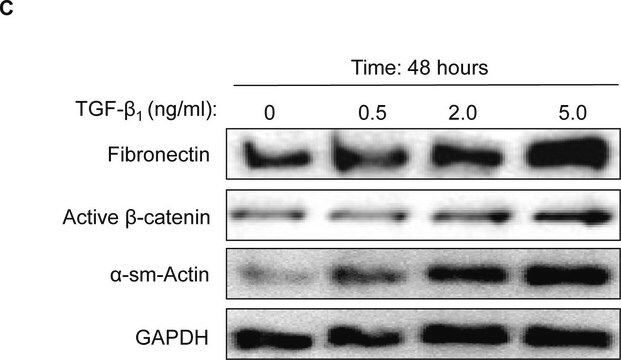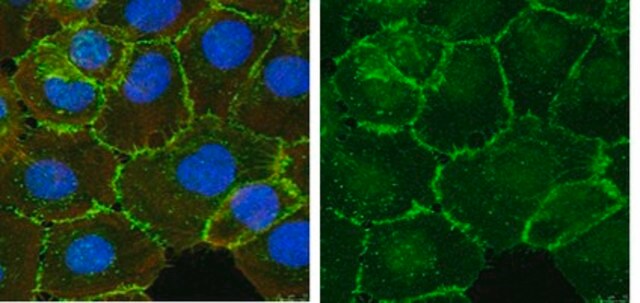MAB2081
Anti-β-Catenin Antibody, clone 5H10
clone 5H10, Chemicon®, from mouse
Sinônimo(s):
Anti-CTNNB, Anti-EVR7, Anti-MRD19, Anti-NEDSDV, Anti-armadillo
About This Item
Produtos recomendados
fonte biológica
mouse
Nível de qualidade
forma do anticorpo
purified immunoglobulin
tipo de produto de anticorpo
primary antibodies
clone
5H10, monoclonal
reatividade de espécies
rat, human
fabricante/nome comercial
Chemicon®
técnica(s)
immunocytochemistry: suitable
immunohistochemistry (formalin-fixed, paraffin-embedded sections): suitable
immunoprecipitation (IP): suitable
western blot: suitable
Isotipo
IgG1
nº de adesão NCBI
nº de adesão UniProt
Condições de expedição
wet ice
modificação pós-traducional do alvo
unmodified
Informações sobre genes
human ... CTNNB1(1499)
rat ... Ctnnb1(84353)
Descrição geral
Especificidade
Imunogênio
Aplicação
Immunohistochemistry on formalin fixed paraffin embedded tissues requires light fixations and citric acid/microwave antigen recovery for staining; In brief, sections of 2μm thickness were treated after deparaffinization with 0.3% hydrogen peroxide in methanol for 30 minutes to inhibit endogenous peroxidase and washed with TBS solution (Tris-buffered saline pH 7.6). To enhance antigen retrieval, sections were microwave-pretreated in 0.01 M citrate buffer solution at 750 W for a 3 minute-cycle period repeated three times; amplified detection methods are recommended.
Immunocytochemistry: Effective for A431 and HT1080 cell lines with acetone or methanol, or light PFA fixation.
Immunoblotting
Immunoprecipitation
Optimal working dilutions must be determined by end-user.
Epigenetics & Nuclear Function
Transcription Factors
Descrição-alvo
Ligação
forma física
Armazenamento e estabilidade
Nota de análise
A431 and HT1080 cell line extracts
Outras notas
Informações legais
Exoneração de responsabilidade
Não está encontrando o produto certo?
Experimente o nosso Ferramenta de seleção de produtos.
recomendado
Código de classe de armazenamento
10 - Combustible liquids
Classe de risco de água (WGK)
WGK 2
Ponto de fulgor (°F)
Not applicable
Ponto de fulgor (°C)
Not applicable
Certificados de análise (COA)
Busque Certificados de análise (COA) digitando o Número do Lote do produto. Os números de lote e remessa podem ser encontrados no rótulo de um produto após a palavra “Lot” ou “Batch”.
Já possui este produto?
Encontre a documentação dos produtos que você adquiriu recentemente na biblioteca de documentos.
Nossa equipe de cientistas tem experiência em todas as áreas de pesquisa, incluindo Life Sciences, ciência de materiais, síntese química, cromatografia, química analítica e muitas outras.
Entre em contato com a assistência técnica








